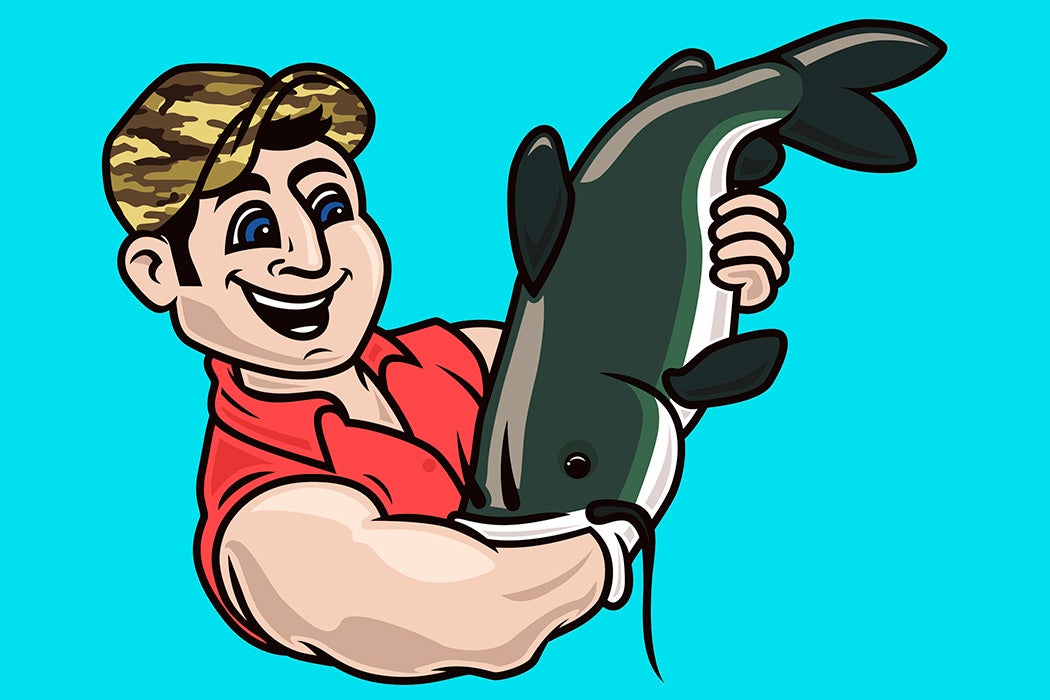“The deeper you go, the darker it gets,” journalist Ruth Tobias writes. And while this could apply to lots of things, Tobias is describing noodling, a method of hand-catching fish.
It requires the would-be catcher to get in “partly or fully in your river, lake, or pond of choice” to trap the fish, usually catfish, “in their nesting holes or under brushpiles, jamming your arm through their mouths,” Tobias writes. It’s a sport with, as an Oklahoma noodling tournament’s slogan proclaims, “no hooks, no bait, [and] no fear”
According to Tobias, noodling’s history is mostly unrecorded, though the director of a documentary on the practice tells her that “a few photos here and there of Native Americans holding up fish” testify to its longevity. Today, the practice generally stays alive through families passing the tradition down through the years. As Mary Grigsby, a sociologist who has studied the practice, the men (it’s mostly men who do noodling) who are part of this subculture view it as “a central and distinctive part of [their] way of life…to pass on to his children and to see passed on to their children.”
So how do you noodle? As Grigsby explains, it’s a group activity, both for camaraderie and for safety.
“Most often hand fishing is done in a group with assistants blocking the hole to keep the catfish from escaping,” she writes, “monitoring the noodlers’ situation to make sure they do not get trapped or injured while under water, and assisting in dragging the fish from the water once the catch is made.”
The fishermen use their fingers as a sort of lure, enticing the fish to bite them by sticking their hands into underwater holes, often under tree roots or logs. When you use yourself as bait, there’s bound to be some danger. Noodlers are often injured—and not just by fish. Snakes, otters, turtles, and other wildlife are biters, too. And since biting is catching, “the fisher is always bitten by the catfish which creates ‘river rash,’ an abraded and irritated area on the arms or hand,” Grigsby explains. The locations of the fishing holes are a well-kept secret. As Grigsby notes, “Only trusted people are shown where a good fishing hole is.”
But the tension isn’t just between the catcher and the caught. Though noodling has had its share of mainstream attention, it’s mostly a niche activity, both because of its danger and because it’s illegal in most states. According to wildlife management groups, the practice depletes the catfish population; the noodlers have their own theories about the regulations, however, including that noodling reduces the number of fishing licenses and the revenue they generate.
Weekly Newsletter
Because it’s illegal in so many places, noodling also walks the line between shadowy underworld and tight-knit community. As Grigsby writes, “The illegality…in Missouri promotes group solidarity and shared identity.” After a productive day of noodling, there’s often a communal fish fry, which highlights “reciprocity and interdependence” as core values of the noodlers, who “share with their community, feeding people at fish fries” or give away extra catch to people in need.
For the people who’ve noodled for generations, it’s a way of life and a practice worth protecting. As one noodler told Grigsby, “[It’s] somethin’ that I was born and raised to do […] I’ll teach my kids and hopefully they’ll teach theirs and just on down the road. [That] way it’s never, never lost.”
Support JSTOR Daily! Join our membership program on Patreon today.







